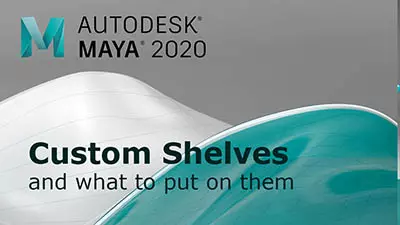Complex UV Layout in Maya
Over the last couple of years UV layout in Maya has changed for the better. In this course we're going to be taking a look at some of those changes as we UV map an entire character
#
1
05-10-2012
, 05:54 PM
Registered User
Join Date: Oct 2012
Join Date: Oct 2012
Posts: 3
Between rigging - painting weights.
I'm just wondering - as I can't seem to find information on it - what the process is called of 'constraining' the range of motion of certain joints. I have binded my joints to the mesh and everything seems fine. From the looks of thing, I sort out the pinching problems by painting weights. That is very Clear...
What is not is how I, for example; prevent a leg going back futher than is humanly possible? More importantly, how to I constrain the neck from moving upwards till he looks like a giraffe.
Just the name of 'the process' so I can google it, or a link to a utube video that touches on the subject would be great.
Thanks
#
2
05-10-2012
, 10:07 PM
Joint Limit Information attributes specify the minimum and maximum translation, rotation, and scaling values for a joint. You can set a joint’s limits if you want the joint to behave in a specific manner. For example, if you want to create an elbow joint for a human skeleton, you need to set its rotation limits so that it cannot rotate in X and Z, but can rotate only a specified amount in Y. Alternately, you can turn off transformation channels or use Set Driven keys to restrict the transformations of an object.
If you are using IK to pose your joints, you may want to set the degrees of freedom for your joints. The Degrees of freedom tool setting determines which local axes the joints can rotate around during IK posing and animation. You can set the degrees of freedom for a joint from the Joint section of the joint node attributes.

2 x Modeling Challenge Winner
#
3
06-10-2012
, 12:09 AM

Imagination is more important than knowledge.
#
4
06-10-2012
, 04:53 AM

2 x Modeling Challenge Winner
#
5
07-10-2012
, 04:28 AM
Registered User
Join Date: Oct 2012
Join Date: Oct 2012
Posts: 3
The thought had crossed my mind when posting this and the memory I have from watching behind the scenes of 2d Disney classics. As you say they would go beyond what was phycially possible slightly to sell it.
I think I will look into what jsprogg has said and set my limitations quite low, so I can still push it just a little past realism but not too much.
Thanks so much for your help, both of you.
Posting Rules Forum Rules
Similar Threads
Painting weights stopped working
by PaperMoon in forum Maya Basics & Newbie Lounge replies 1 on 20-03-2011
is there a trick to painting weights?
by Rhetoric Camel in forum Maya Basics & Newbie Lounge replies 4 on 18-11-2007
Painting Weights - HELP!!
by Damned Soul in forum Maya Basics & Newbie Lounge replies 2 on 06-09-2007
Painting skin weights
by SpaceGoat in forum Maya Technical Issues replies 0 on 15-06-2006
Please help with Goal_PP
by Joselu I.B. in forum Dynamics & Special Effects replies 6 on 24-04-2003
Topics
Free Courses
Full Courses
VFX News
How computer animation was used 30 years ago to make a Roger Rabbit short
On 2022-07-18 14:30:13
Sneak peek at Houdini 19.5
On 2022-07-18 14:17:59
VFX Breakdown The Man Who Fell To Earth
On 2022-07-15 13:14:36
Resident Evil - Teaser Trailer
On 2022-05-13 13:52:25
New cloud modeling nodes for Bifrost
On 2022-05-02 20:24:13
MPC Showreel 2022
On 2022-04-13 16:02:13









